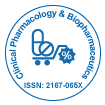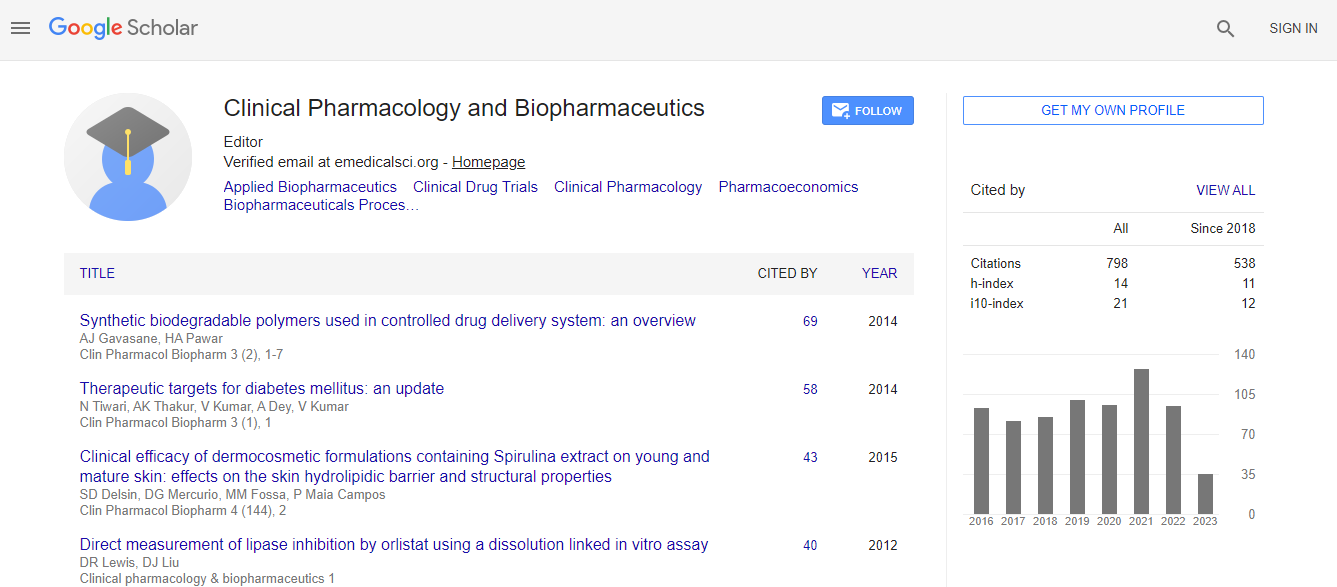Our Group organises 3000+ Global Conferenceseries Events every year across USA, Europe & Asia with support from 1000 more scientific Societies and Publishes 700+ Open Access Journals which contains over 50000 eminent personalities, reputed scientists as editorial board members.
Open Access Journals gaining more Readers and Citations
700 Journals and 15,000,000 Readers Each Journal is getting 25,000+ Readers
Google Scholar citation report
Citations : 1089
Clinical Pharmacology & Biopharmaceutics received 1089 citations as per Google Scholar report
Clinical Pharmacology & Biopharmaceutics peer review process verified at publons
Indexed In
- CAS Source Index (CASSI)
- Index Copernicus
- Google Scholar
- Sherpa Romeo
- Genamics JournalSeek
- RefSeek
- Hamdard University
- EBSCO A-Z
- OCLC- WorldCat
- Publons
- Euro Pub
- ICMJE
Useful Links
Recommended Journals
Related Subjects
Share This Page
Development Of Acute Renal Fa├?┬▒lure After Magnet├?┬▒c Resonance W├?┬▒th Gadopentetate
International Conference and Expo on Biopharmaceutics
Oznur Kal1, Esra Zeynep Co├?┬?kunoglu2 and H Ulas P├?┬▒nar3
1Ba├?┬?kent University Medical Faculty Konya Hospital Department of Nephrology, Turkey 2Ba├?┬?kent University Medical Faculty Konya Hospital Department of Pathology, Turkey 3Ba├?┬?kent University Medical Faculty Konya Hospital Department of Anesthe
Posters-Accepted Abstracts: Clin Pharmacol Biopharm
Abstract
Introduction: Gadolinium (Gd) based contrast materials are tradititonnaly considered non nephrotoxic. In the past, acute renal failure (ARF) has been reported after gadolinium administration in some publications. However, in these cases, there were some adverse factors such as repeated MR measurments and high risk of patients for ARF. The aim of this case report was to demosntrate the fact that a patients with no risk factors for ARF may have repdily progressive ac├?┬▒ute renal failure after undergoing even a single MR examination. Case: A 65 year old female patient, at the weight of, 75 kilogram and height of 165 cm underwent upper abdominal mr examination with the presumptive diagnosis of mesenteric ischemia when she sought medical help for abdomianal pain. She had no history of diabetes, hypertension and kidney problems. Neither was there any history of NSAIDs and nephrotoxic agents. During examination process, 50 mg gadopentetate was used. MR revelaed no pathological findings. 3 days later, rapidly progressive anuric acute renal failure developed. In Anesthesia intensive care unit, she underwent dialysis for six sessions. Renal biopsy was carried out. Biopsy results turned out to be acute tubular necrosis and acute intersistial nephritis. Acute renal failure improved after subsequent hemodialysis sessions. And the patient was dischared without any complications. Discussion: Gd based contrast media were introduced as alternatives to iodinated media for magnetic resonance imaging. Gd based contrast media have significantly lower volumes ,making them potentially less nephrotoxic. While Gd based contrast media were initially thought to be a safe alternative to iodinated radiological contrast agents for patients with chronic renal insufficiency, many clinical studies and case reports of gadolinium- associated acute kidney ├?┬▒njury have now been recorded. The underlying mechanism of Gd induced renal injury is not completed understood. Some risk factors for contrast induced nephropathy have been well defined: chronic renal insufficiency ,older age, concomitant use of other nephrotoxic agents, hypotension, diabetes mellitus and congestive heart failure are the main risk factors for the development of contrast-induced nephropathy. Nevertheless the evidence of nephrotoxicity due to Gd is conflicting. Conclusion: Although Gd based contrast media have been traditionally considered as non-nephrotoxic, have recently been reported to be associated with acute kidney injury. In the present case, although there was no risk factor for acute renal failure, anuric renal failure developed following MRI imaging, which is a source of concern. It should be borne in mind even in patients without any risk factor for ARF development, the cases should be hydrated adequately and monitorized closely as a measure against the development of ARF.Biography
Email: drozkanonal@selcuk.edu.tr

 Spanish
Spanish  Chinese
Chinese  Russian
Russian  German
German  French
French  Japanese
Japanese  Portuguese
Portuguese  Hindi
Hindi 
